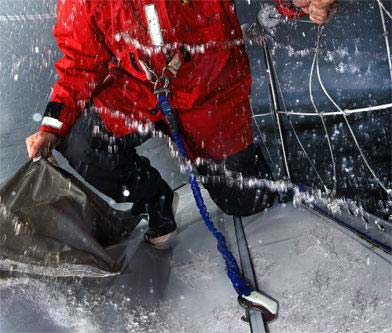Advertisement
Man-overboard situations can come miles offshore or on a space as small as a stormy lake. Here’s some sound advice on jacklines.

Falling over the side and watching the boat sail off into the distance is one of a sailor's worst nightmares, so staying on board should be top of the safety list. Traditionally this has been accomplished by using jacklines; lines that run from stem to stern that allow anyone working on deck to clip a safety harness on that still allows them to walk the length of the deck to attend to sail changes and other duties.
Often jacklines are made from stainless steel wire rope. Although strong and effective, it comes with several significant disadvantages. First, because it's round, it has a tendency to roll underfoot and could actually help cause the very thing it's trying to prevent. Second, wire rope is unforgiving to teak decks and nonskid paint, which it can wear away and leave unsightly black marks.
The answer to both these issues is to utilize jacklines made of webbing. For many years I used 1-inch-wide tubular webbing with great success. It's both kinder on the deck and reduces the chance of a misstep if trodden upon. Although I thankfully never put it to the test, the webbing has some stretch cushioning the jerk should the harness wearer find him- or herself going over the boat's side.
Incidentally, jacklines are often rigged along the side decks, which seems like the obvious place, but this is seldom the best placement. It is often far better to run a single jackline along the centerline of the boat where, should a crew member slip, he or she will more than likely fall onto the deck rather than going over the guardrail.
